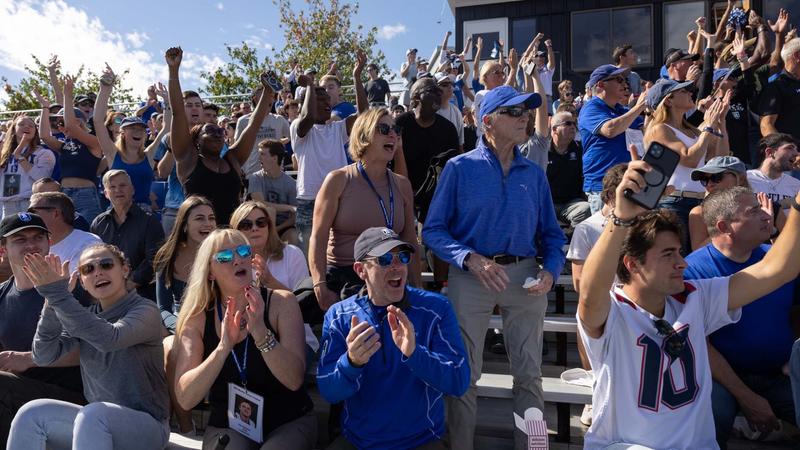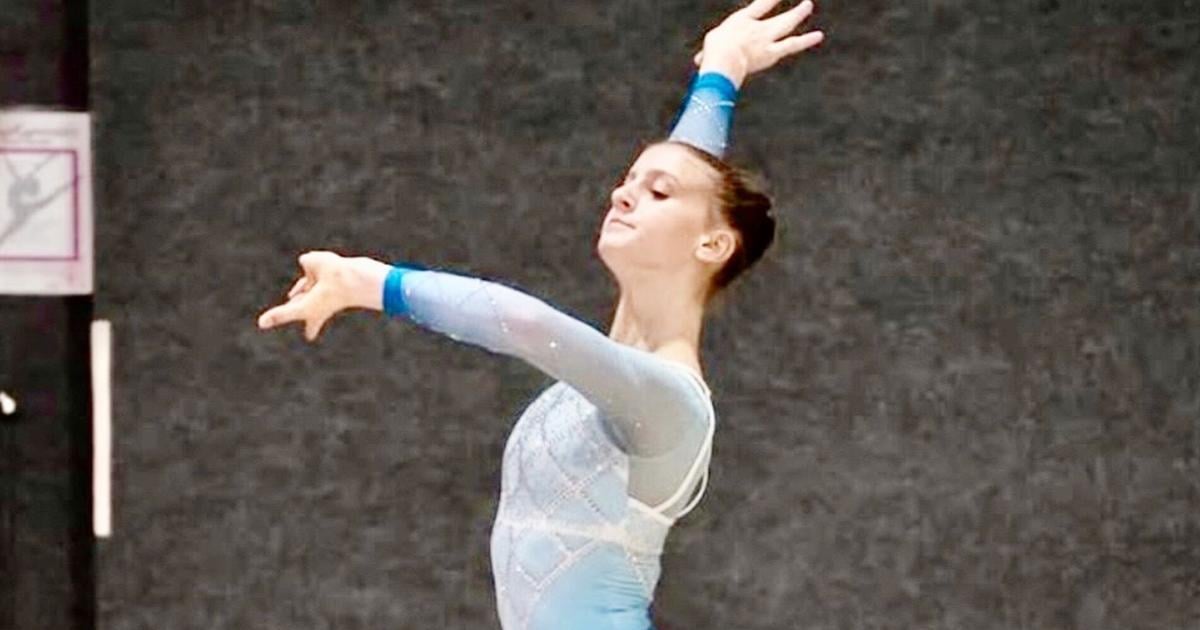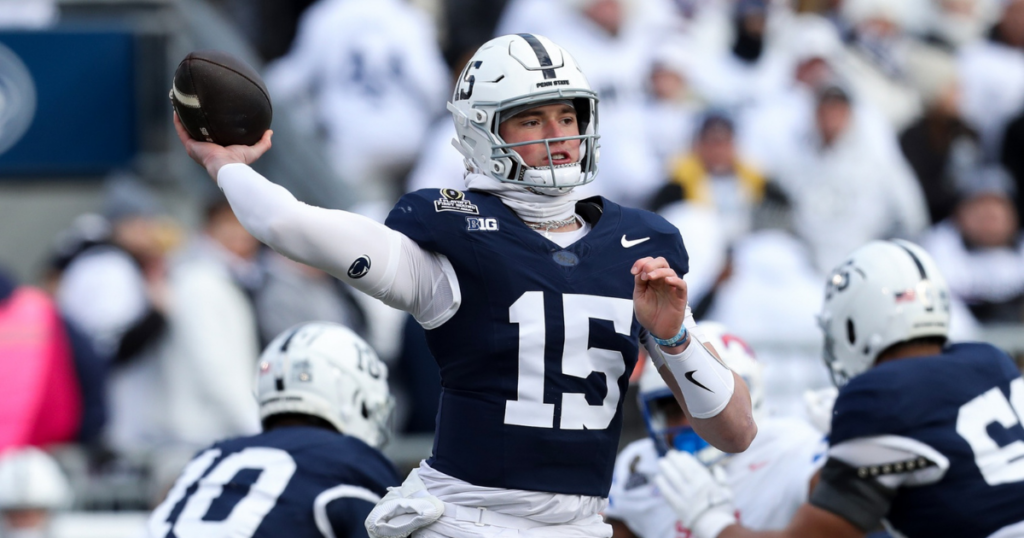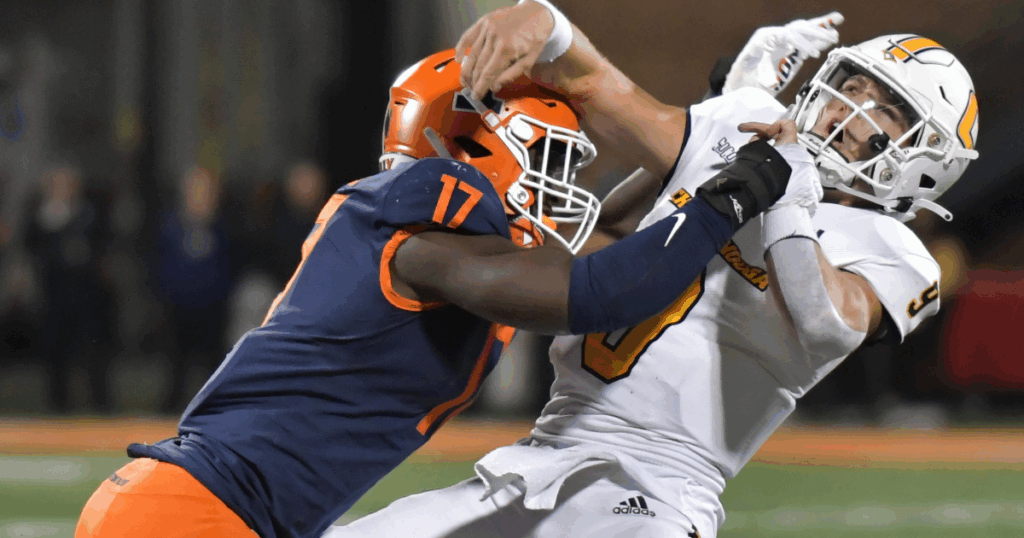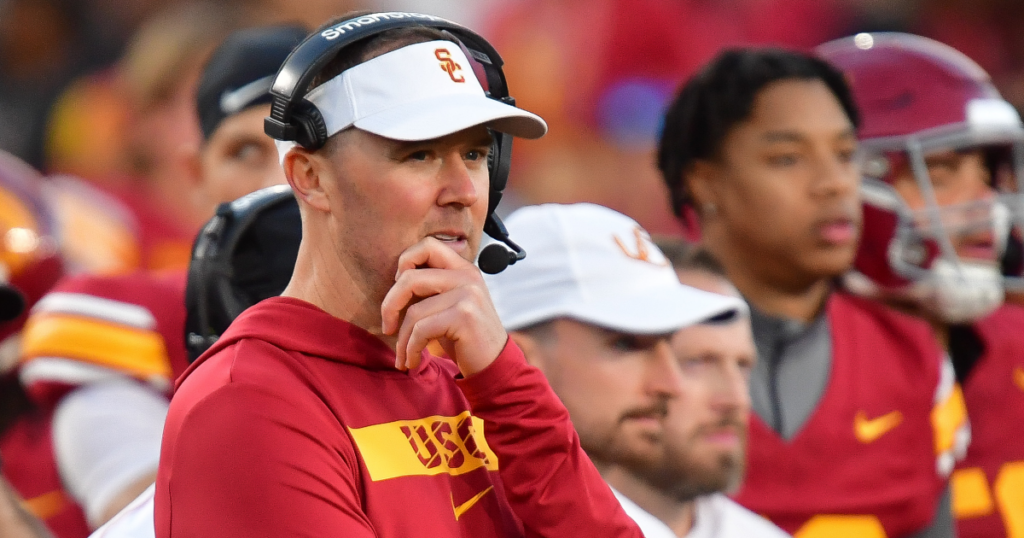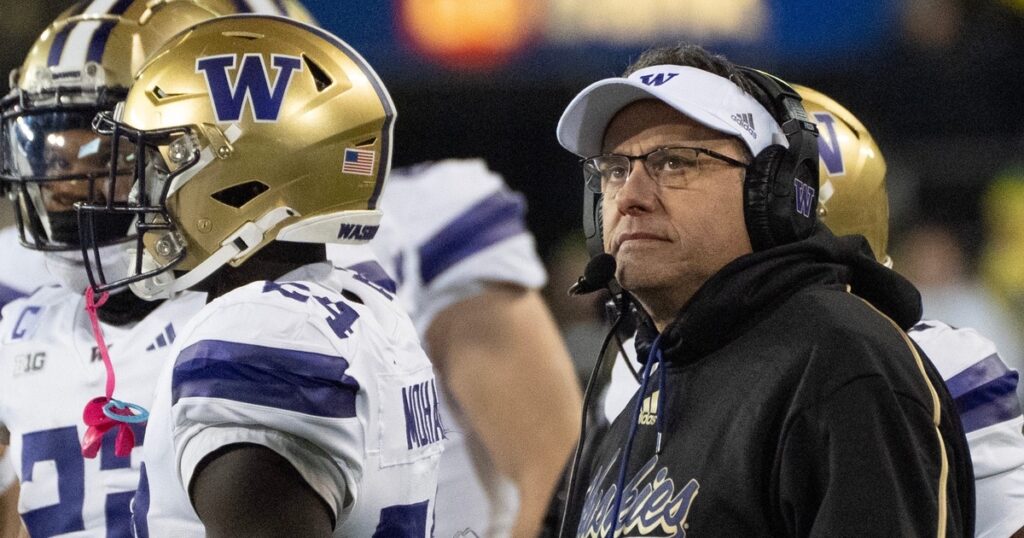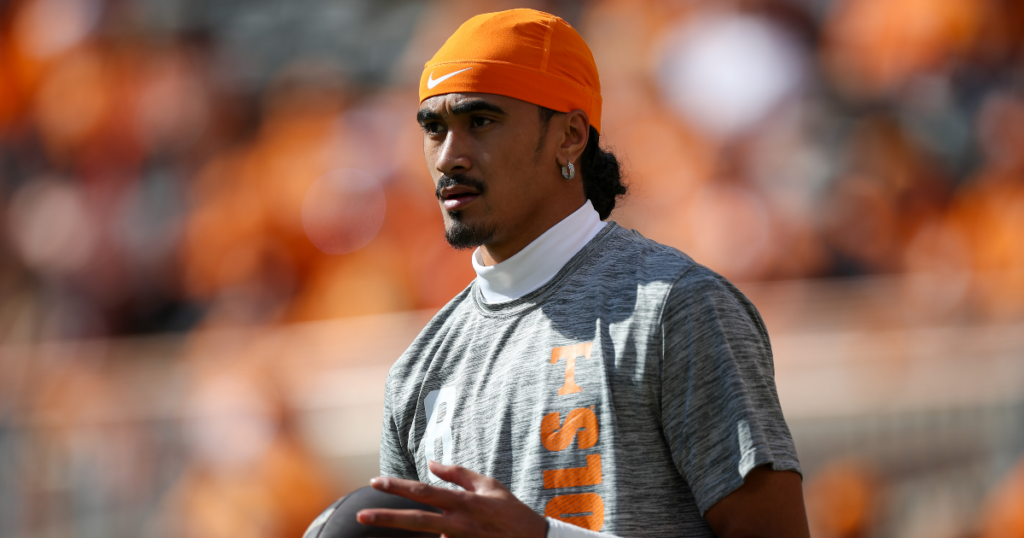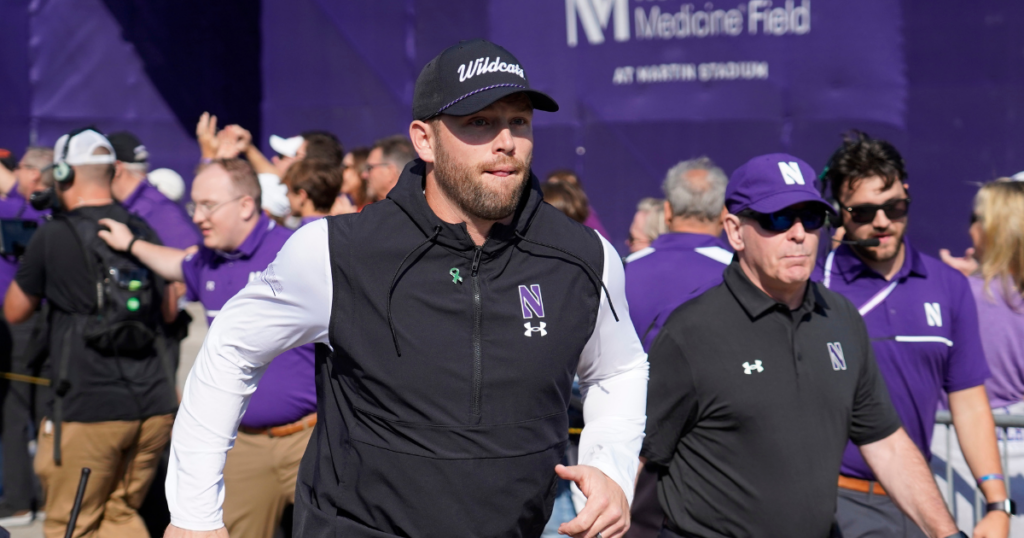Editor’s Note: This story is a part of Peak, The Athletic’s desk covering leadership, personal development and success through the lens of sports. Follow Peak here.
Midway through his junior season, Richie Saunders, a 6-foot-5 small forward at BYU, received an unexpected piece of advice from his head coach. Saunders was in the midst of a breakout season, which meant that endorsement offers were starting to surface. However, he worried about distractions, so he wanted to wait until the offseason.
That is, until Kevin Young, BYU’s first-year head coach, told him the financial component was worth prioritizing now.
“He’s kind of helped me see, for example, being a professional basketball player, you have to have these kinds of conversations during the season,” Saunders said in March, during the Cougars’ run to the Sweet 16. “And it can’t detract from your focus, but you need to have them.”
Until recently, a college basketball coach encouraging a player to pursue endorsements during the season would have been unimaginable. However, that was before the era of name, image and likeness (NIL) and the transfer portal.
The birth of paid players and de facto free agency has reshaped college sports in almost every way. It’s also challenged the traditional leadership archetype of a college basketball coach.
Once upon a time, the leadership style of a college coach was simple: intense, demanding, rigid, focused on detail and motivating with more stick than carrot. However, as the college game has become more professionalized, the result is a coaching model that is a little younger, a little more flexible and a little more in line with their NBA brethren.
The evolution has left coaches grappling with a big question: As college basketball players gain more money, more agency and more power, what is the best way to lead them?
In the early 2000s, Daniel Goleman, an American psychologist and science journalist, conceived a framework for leadership, identifying six leadership styles commonly found in the business world. They were, in order: coercive, authoritative, affiliative, democratic, pacesetting and coaching.
Each style included a detailed description, but Goleman offered a useful shorthand.
- Coercive leaders demand immediate compliance.
- Authoritative leaders mobilize people toward a vision.
- Affiliative leaders create emotional bonds and harmony.
- Democratic leaders build consensus through participation.
- Pacesetting leaders expect excellence and self-direction.
- Coaching leaders develop people for the future.
Through research and experience, Goleman maintained that the best leaders toggled between styles, utilizing each one at the appropriate moment, like different clubs in a golf bag.
The classic archetype of a college coach has often leaned on two styles, blending what Goleman called “coaching” leadership with “coercive” leadership. Perhaps most visible in coaches like Bobby Knight, Tom Izzo or Mike Krzyzewski, these styles emphasized discipline, rigid demands and high standards to prepare players for the next level.
However, that style, former college coach and NBA coach Lon Kruger said, is harder to employ in the pros, where players are grown men with lavish salaries and stars often possess more power than the coach. As a result, NBA coaches have usually prioritized other leadership styles, leaning more on Goleman’s “authoritative”, “affiliative” and “democratic” leadership styles.
“With NBA guys,” Kruger said, “it’s more of a communication thing than a challenging or demanding type of thing.”
When Brad Stevens transitioned from head coach at Butler University to the Boston Celtics in 2013, he found that the most difficult challenge in the NBA was creating a sense of purpose in a group amid the anticipation of roster turnover. If a player wasn’t sure if he would be back the following season, he was less likely to buy in.
The cyclical nature of college basketball has consistently led to roster turnover. However, the recent addition of unlimited free transfers has created a system with more turnover and more uncertainty than almost any level of professional basketball.
“I get a kick out of people when they say, ‘Man, you’ve got like pro rules,’ ” Izzo said in March. “I always say, ‘Which ones are those? We don’t have free agency. We don’t have a salary cap. We’ve got beyond pro rules.’ ”
Over the years, Izzo is among those coaches who have softened his most grueling methods. In his earliest days at Michigan State, he borrowed football pads from Nick Saban and put their players through the famous “War Drill,” a full-contact rebounding exercise. He eventually stopped using the pads, though not because he worried about his players.
“The lawyers would sue me,” Izzo said. “So I don’t do that anymore.”
Izzo, though, still feels like that drill is essential. When he studies other successful coaches, he sees similar values. Players need to be disciplined, tough, accountable and connected. The difference in the era of NIL may lie in the ways coaches communicate their standards and values to players.
“We go too far to the right or too far to the left when we’re making adjustments,” Izzo said. “And that’s why I vowed that I’m going to do what I believe in.”
Michigan State, which advanced to the Elite Eight last season before losing to Auburn, has retained much of Izzo’s foundational program culture. However, the portal, coaches say, has put more pressure on coaches to create bonds and connections before each season.
“You feel like you can skip steps when you really can’t,” Duke coach Jon Scheyer said. “You have to start from ground zero every summer.”
For years, Scheyer says, the Duke program ran on the idea of empowering players to lead, passing down the culture to the next generation.
“Players teaching players,” Scheyer said.
That changed, in part, with the emergence of one-and-done freshmen, which led to increased roster turnover. And it changed even more as the portal wreaked havoc on continuity. So last offseason, the Duke staff embarked on an unofficial summer class: Duke Basketball 101.
“We went back to the basics this (last) summer of just how to build this team from the ground up, build the connectivity, teach the standards, hold them accountable to what the standards are,” Scheyer said. “And that’s something I know we’re going to have to do each year going forward.”

Duke coach Jon Scheyer knew he was only going to have Cooper Flagg for one season. (Jared C. Tilton / Getty Images)
When Alex Jensen became the head coach of Utah in early March, he surveyed the landscape of college basketball: player movement, money, negotiations for what amounted to year-long deals.
For Jensen, previously an assistant with the Dallas Mavericks, the system resembled one of his former stops: head coach in the NBA’s G League.
“The college game, I think it’s becoming more and more professional,” Jensen told reporters at his opening news conference. However, Jenson said he thinks most players are still the same.
“They want to know if you care and two, if you know what you’re talking about,” Jensen said.
Jensen, who played at Utah, was the latest NBA assistant to land a Power Four college job (Florida State also hired Luke Loucks, a former Sacramento Kings assistant). The coaches were comfortable with the transactional nature of professional basketball.
In some cases, Jensen says, “it makes it simpler if that makes any sense.”
“That chaos has been my reality,” Loucks said in March. “My reality as a professional coach and a professional player in Europe is constant roster turnover, constant ego management. One player is on a $300 million contract, and the other one is on minimum wage. Minimum wage in the NBA is like $1.2 million, but … there’s egos involved.”
What Loucks learned during his years as an NBA assistant was not that coaches should lower their standards or be overly deferential to players. It was that trust and respect were paramount in building relationships. To lead players at the professional level meant understanding who they were and what motivated them.
“You never want to be friends with your players,” Loucks said. “But you need them to trust you. Or all of your words and all of your teaching, all of your coaching is in one ear and out the other. And it has to be authentic. If you don’t build authentic relationships, you have no chance.”
The trend has not been limited to head coaches.
In May, Kansas hired former NBA head coach Jacque Vaughn — a program legend — to fill an assistant coaching opening, while Duke hired Evan Bradds, a 31-year-old assistant with the Utah Jazz. In announcing the hire, Duke touted Bradds’ “player development and NBA coaching experience.”
Meanwhile, Kansas coach Bill Self said that Vaughn “brings immediate credibility to guys that want to be pros out there.”
When Kruger coached in the NBA, he often heard the phrase “players’ coach.” Its definition was always elusive, depending on the source. Still, he came to this conclusion: A player’s coach was a good communicator, honest and empathetic, who always provided a clear path forward.
“My style was not to yell and scream,” Kruger said. “Which I think certainly doesn’t work in the NBA. You have to communicate on a more peer basis rather than saying, ‘I’m the coach and you’re the player and disregard everything else.’ ”
College coaches may soon resemble their NBA counterparts, Kruger says, but the secrets of leading basketball players remain the same, no matter the level: You need to be able to adjust. You need to embody different styles. You need to build relationships.
In other words, you need to be an effective and consistent leader.
(Illustration: John Bradford / The Athletic; Andrew Wevers, Alex Slitz / Getty Images)

